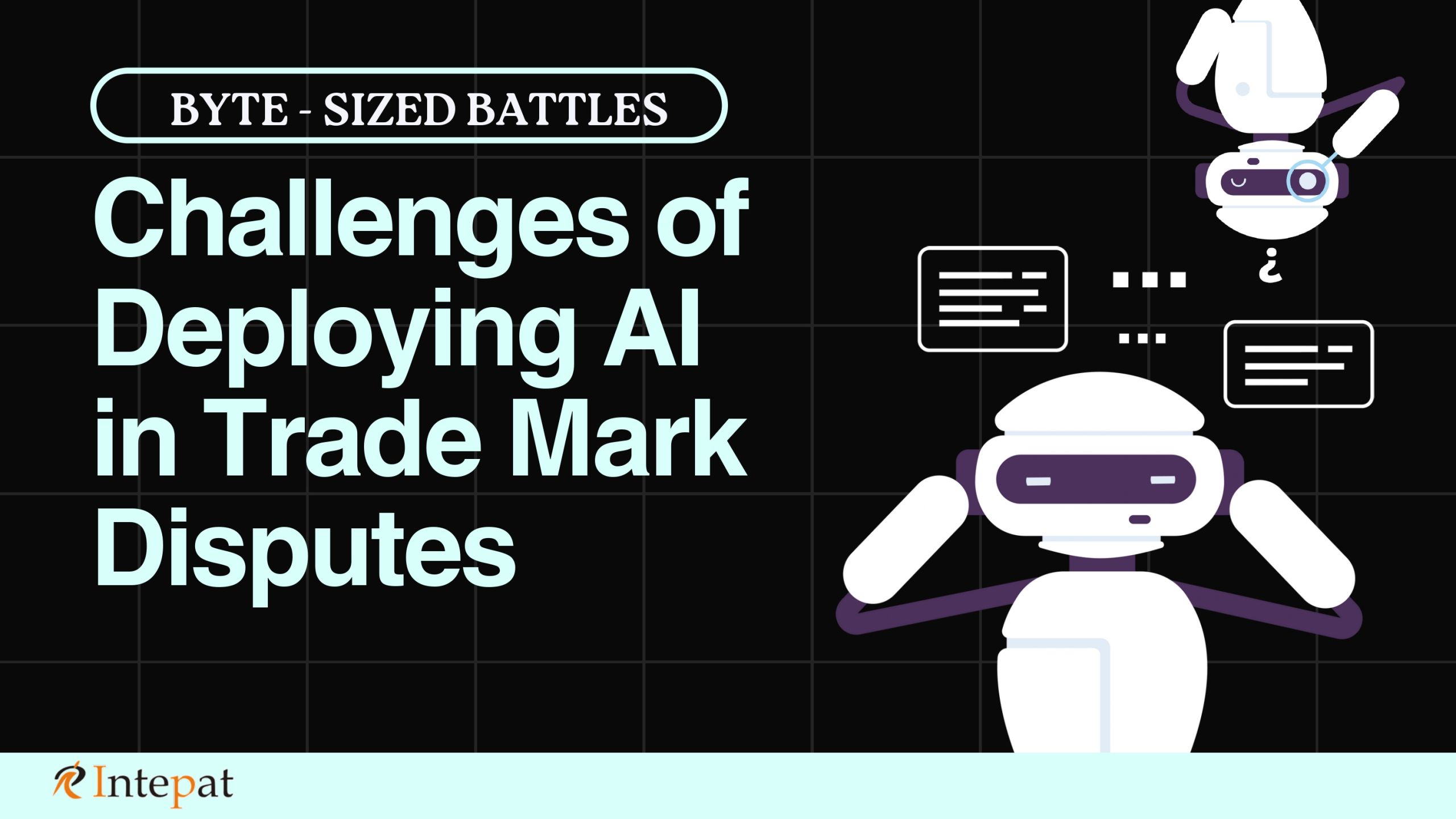
On April 11, 2024 the United States Patent and Trademark Office (USPTO) issued Guidance on the use of Artificial Intelligence Based Tools (“Guidance”) by applying the existing rules and policies to the use of Artificial Intelligence (AI). These regulations do not provide for a new regulation, rather discuss the risks associated with using AI for drafting, filing and interacting with the documents and USPTO systems. Additionally, it also provides for measures that remedy those risks and deals with the issue of confidentiality and national security.
The Guidance deals with four primary aspects that includes drafting of documents for the submission with USPTO, usage of AI to interact with the electronic systems, confidentiality and national security concerns and the Duty of Candor and Good Faith. The Do’s and Don’ts for each of these categories are specified pertaining to how an applicant and attorney should pay attention to the technicalities, maintaining and responding to applications, the review of petitions and more.
In this blog we will be looking at the challenges of deploying AI in the trademark disputes and the advisable steps under the guidance on the use of Artificial Intelligence Based Tools which can be implemented to deal with the obstacles.
Areas for Deploying AI in Trademark Disputes
- Trademark and Licensing:
Artificial intelligence (AI) has the potential to assist in tasks such as checking the availability of trademarks and monitoring for infringement. It can also forecast when trademark renewals are due and generate more advanced notifications and reminders. AI has the potential to aid in the process of matching with licensees and optimizing agreements in the field of licensing.
- Prosecution and Litigation:
AI has emerged as a crucial instrument in the process of trademark search and clearance. AI-powered solutions employ machine learning algorithms to aid lawyers in conducting thorough searches across extensive databases of preexisting trademarks. These tools take into account criteria such as resemblance in sound, look, and meaning, allowing for quick identification of possible conflicts and evaluation of the feasibility of proposed trademarks. This method significantly decreases the amount of time needed for these searches while enhancing accuracy.
- Drafting and Ideation:
Nevertheless, the complete capability of AI in significant prosecution tasks, such as creating and organizing trademark applications, is still evolving. The integration of AI in various domains is occurring gradually, accompanied by continuous improvement of the technology and its utilization in the legal sector.
We primarily see three challenges which are bias, accountability , and data scarcity when using AI as a tool in trademark disputes.
Bias
Algorithmic programming can be infiltrated by biases, which can then influence the weights assigned to the system. This phenomenon may arise from the subjective assessments made by judges and the interpretations made by individuals while assessing the outcomes of artificial intelligence. Reinforcement learning methods can include bias, which raises the probability of “snowballing unfairness.”
Previous judgments can trigger a sequential search for a certain goal. The lack of a structured methodology to systematically assess components exacerbates prejudice. Artificial intelligence facilitates the integration of data and provides statistical predictions based on input variables, whereas humans encounter difficulties in integrating information.
AI has the potential to assist in resolving trademark infringement claims by establishing precise numerical criteria. For example, a model may necessitate judges to evaluate the probability of confusion factors on a scale ranging from 0 to 10. This would offer more detailed information regarding the specific attributes that influence the outcomes in cases involving likelihood of confusion. By mimicking judges and assigning a low rating to a certain factor, it would lead to a reduced success rate for plaintiffs.
AI recommendations can potentially question judges’ preconceptions, serving as a safeguard against coherence-based reasoning. In order to tackle the problem of “snowballing unfairness,” it is important to collect a large amount of data, as any unintentional bias may not affect the rule that the AI system learns from the data.
Introducing ethics teams in antitrust agencies and economic consultancies would assist decision makers in evaluating the advantages and disadvantages of AI methods and suggestions. These teams would identify the consequences of such procedures, establish guidelines, and resolve ethical disputes.
Accountability
AI can help address trademark infringement but faces challenges in evaluating target audiences and their interest in specific product categories. Academics question the practicality of AI conducting subjective examinations in trademark law, as it lacks the ability to capture subtle distinctions. However, experts agree that AI enhances human decision-making rather than replacing it. While AI can expedite legal research it cannot replace counsel formulation.
While there are recommendations that the Data scientists and teams with both humans and AI can help narrow the gap by enhancing datasets and utilizing combined capabilities it is to be acknowledged that human supervision is crucial in complex cognitive activities, especially in context-specific scenarios. Similarly, while Civil litigation can address trade secret protection issues through protective orders; the uncertainty about the likelihood of confusion factors remains, and AI decision-making could be more effective in adjusting processes. It is also pertinent to note that the simplification of AI can introduce issues like reduced efficacy and increased vulnerability to manipulation.
Data Scarcity
Regional Differences (Data Available), that is to say that one knows Europe has a more homogeneous adoption of AI in trademark law due to its robust legal frameworks and emphasis on intellectual property rights. The European Union’s efforts to harmonize intellectual property laws and the availability of comprehensive data sets enhance AI effectiveness. Asia, however, faces a more complex landscape with diverse legal systems and technological advancements.
Darts-ip, an AI service, has formed a partnership with the Benelux Office of Intellectual Property to include case law data into the registration process. The algorithm utilizes a vast training dataset consisting of millions of cases to discern patterns and establish criteria for determining the similarity of marks. Insufficient data might result in bias, as the dataset may not accurately represent all instances of trademark breaches.
AI utilizes qualitative data, such as consumer preferences and purchase behavior, to evaluate market circumstances. Acquiring real-time market data is more difficult compared to obtaining historical data from previous legal judgments. Furthermore, regulations about privacy, data security, and proprietary information could hinder the ability to obtain this data. The “nearest neighbor” algorithm can assist courts in identifying similar circumstances to the seed case, enabling precise predictions of the likelihood of confused violation by a restraint.
Conclusion
The Guidance on the use of Artificial Intelligence Based Tools provides for the following recommendation regarding the use of AI’s Use in Trademark law and applications:
- Practitioners are advised against using AI-generated photos and specimens as evidence of trademark usage and are required to conduct thorough investigations before signing any contact with the USPTO.
- AI systems and tools are not classified as “users” for submitting documents through the USPTO’s electronic filing systems and therefore AI systems should not generate excessive USPTO database queries or infringe upon the USPTO’s terms of service.
- Confidentiality and national security concerns are addressed, with practitioners ensuring AI providers’ terms of use, privacy policies, and cybersecurity measures protect personal information.
- The USPTO mandates disclosure of any AI use significantly impacting patentability, aligning with the U.S. Copyright Office’s stance on human authorship.
The USPTO’s guidance on using AI in trademark law emphasizes the importance of addressing certain challenges when integrating AI into legal processes. While AI can streamline tasks such as trademark searches and drafting documents, it must be used cautiously to avoid ethical and practical pitfalls. Practitioners are advised to ensure thorough human oversight, maintain confidentiality and national security, and comply with USPTO regulations as far as the US IP system is concerned. By following these guidelines, the legal community can harness AI’s potential to enhance efficiency and accuracy in trademark disputes while mitigating associated risks.
Written by Gayathri S, legal intern @ Intepat IP
